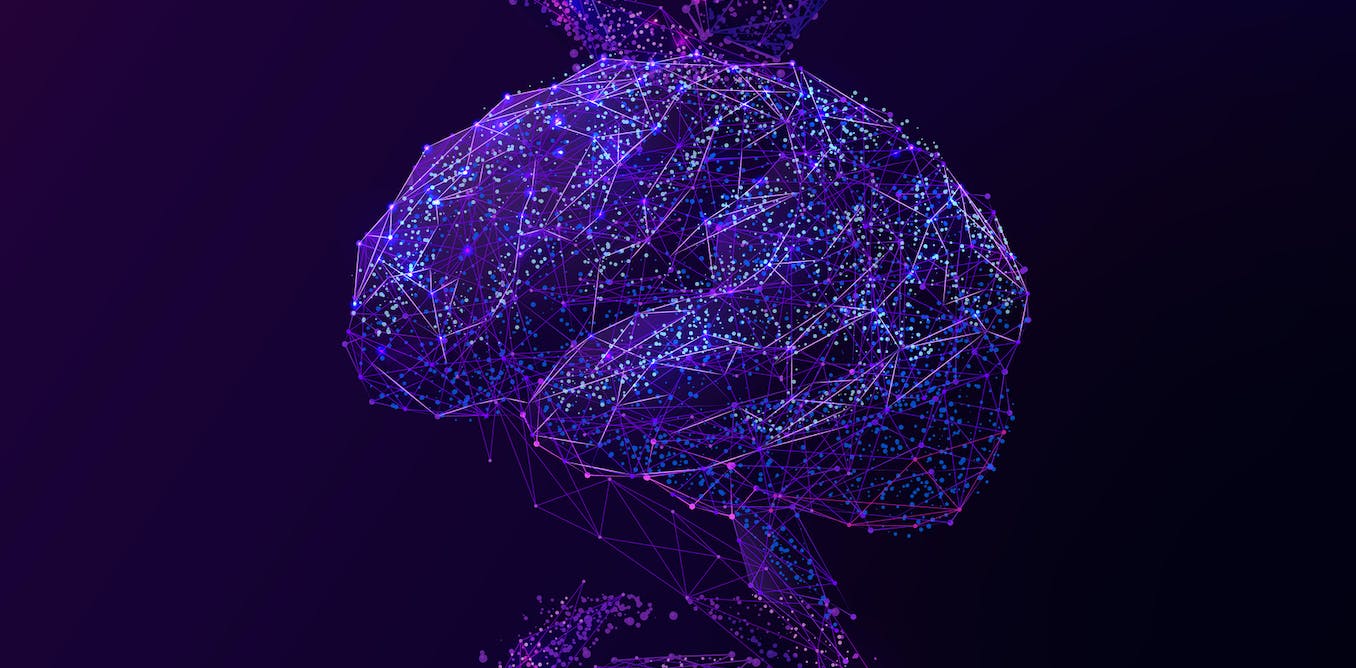Around 55 million people worldwide suffer from dementia such as Alzheimer’s disease. Recently, the actor Bruce Willis was diagnosed with frontotemporal dementia, or FTD, a rare type of dementia that typically affects people ages 45 to 64. In contrast to Alzheimer’s, in which the major initial symptom is memory loss, FTD typically involves changes in behavior.
The initial symptoms of FTD may include changes in personality, behavior and language production. For instance, some FTD patients exhibit inappropriate social behavior, impulsivity and loss of empathy. Others struggle to find words and to express themselves. This insidious disease can be especially hard for families and loved ones to deal with. There is no cure for FTD, and there are no effective treatments.
Up to 40% of FTD cases have some family history, which means a genetic cause may run in the family. Since researchers identified the first genetic mutations that cause FTD in 1998, more than a dozen genes have been linked to the disease. These discoveries provide an entry point to determine the mechanisms that underlie the dysfunction of neurons and neural circuits in the brain and to use that knowledge to explore potential approaches to treatment.
I am a researcher who studies the development of FTD and related disorders, including the motor neuron disease amyotrophic lateral sclerosis, or ALS. ALS, also known as Lou Gehrig’s disease, results in progressive muscle weakness and death. Uncovering the similarities in pathology and genetics between FTD and ALS could lead to new ways to treat both diseases.
Genetic causes of FTD
Genes contain the instructions cells use to make the proteins that carry out functions essential to life. Mutated genes can result in mutated proteins that lose their normal function or become toxic.
How mutated proteins contribute to FTD has been under intense investigation for decades. For instance, one of the key proteins in FTD, called tau, helps stabilize certain structures in neurons and can form clumps in diseased brains. Another key protein, progranulin, regulates cell growth and a part of the cell called the lysosome that breaks down cellular waste products.
Remarkably, the most common genetic mutation in FTD – in a gene called C9orf72 – also causes ALS. In fact, apart from the mutations in genes that encode for tau and progranulin, most genetic mutations that cause FTD also cause ALS. Another protein, TDP-43, forms clumps in the brains of over 95% of ALS cases and almost half of FTD cases. Thus, these disorders share close links in genetics and pathology.
Modifier genes
The same genetic mutation can cause FTD in one patient, ALS in another or symptoms of both FTD and ALS at the same time. Remarkably, some people who carry these genetic mutations may have no obvious symptoms for decades.
One reason the same mutation can cause both FTD and ALS is that, in addition to lifestyle and environmental factors, other genes may also influence whether mutated genes lead to disease. Identifying these modifier genes in FTD, ALS and other neurodegenerative diseases could lead to new treatment approaches by boosting the activity of those that protect against disease or suppressing the activity of those that promote disease.
Modifier genes have long been a focus of research in my laboratory at the University of Massachusetts Chan Medical School. When my laboratory was still in San Francisco, we collaborated with neurologist Bruce Miller and generated the first stem cell lines from FTD patients with mutations in progranulin and C9orf72. These stem cells can be turned into neurons for researchers to study in a petri dish. My team also uses fruit flies to identify modifier genes and then test how they influence disease in neurons from patients with FTD or ALS.
For instance, in close collaboration with cell biologist J. Paul Taylor, my laboratory was among the first to discover a small subset of modifier genes that help transport molecules into or out of the nucleus of a neuron. We also discovered modifier genes that encode for some proteins that help repair damaged DNA. Targeting these modifier genes using gene-silencing techniques developed by Nobel laureate Craig Mello and other researchers at UMass Chan could offer potential treatments.
Treating behavioral changes in FTD
Because the brain is an extremely complex organ, it can be very difficult to understand what causes personality and behavioral changes in FTD patients.
Over the years, my team has used mice to study the causes of these changes. For instance, we found that the reduced social interaction we observed in mice engineered to have FTD is linked to two different disease proteins in the same part of the brain, suggesting that this symptom may be caused by defects in the same neural circuit. These deficits could be reversed by injecting a molecule called microRNA-124 into the prefrontal cortex, the part of the brain that controls social behaviors.
Moreover, with my longtime collaborator neuroscientist Wei-Dong Yao, our labs found that mice with FTD have defects at the synapses in this part of the brain. Synapses are areas where neurons are in contact with each other and play an important role in transporting information in the nervous system. Recently, he found that lack of empathy in another mouse model of FTD could be reversed by increasing activity in the prefrontal cortex.
Further research to understand the molecular mechanisms and brain circuitry behind FTD offer hope that its devastating symptoms, including behavioral and personality changes, will be treatable in the future.


